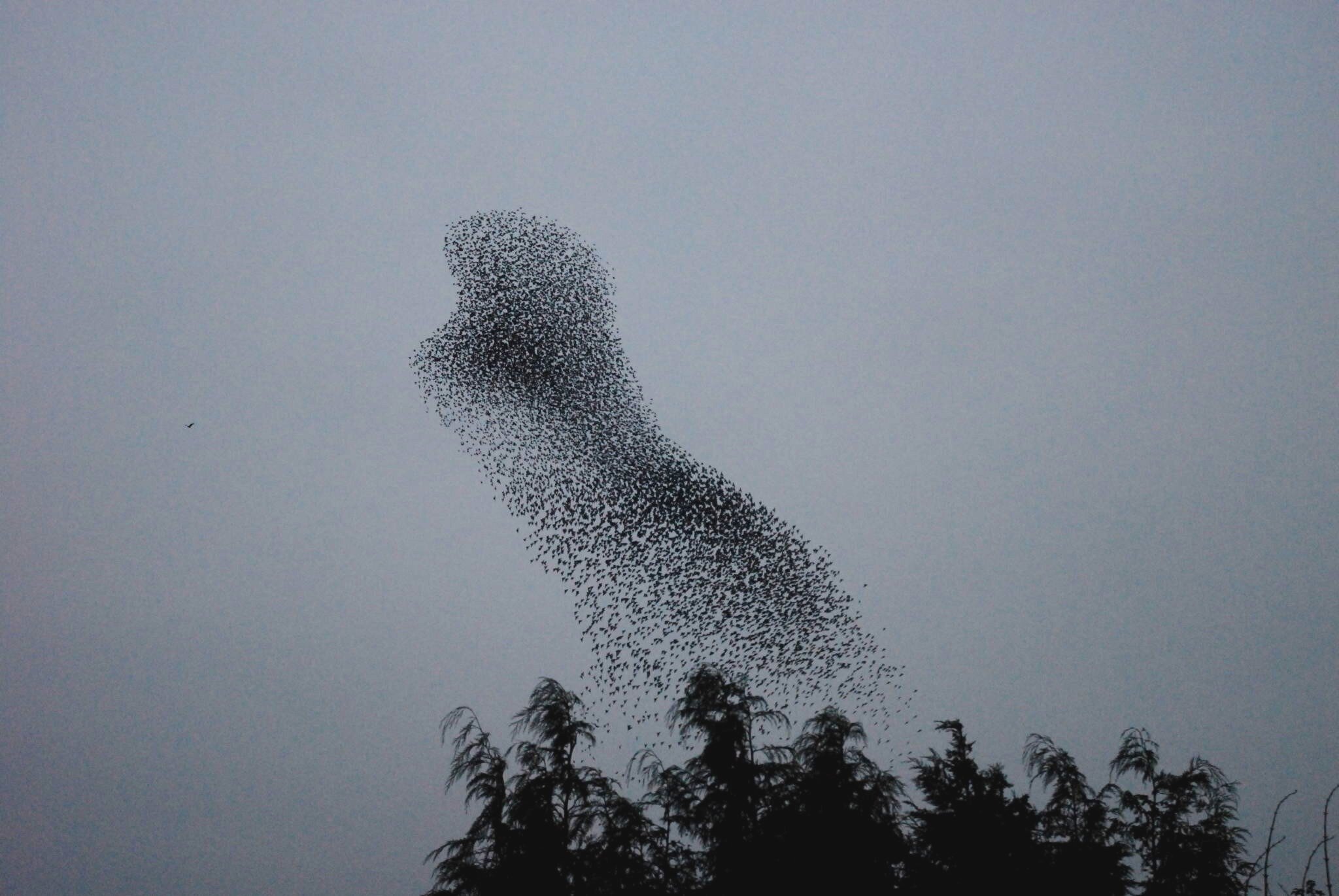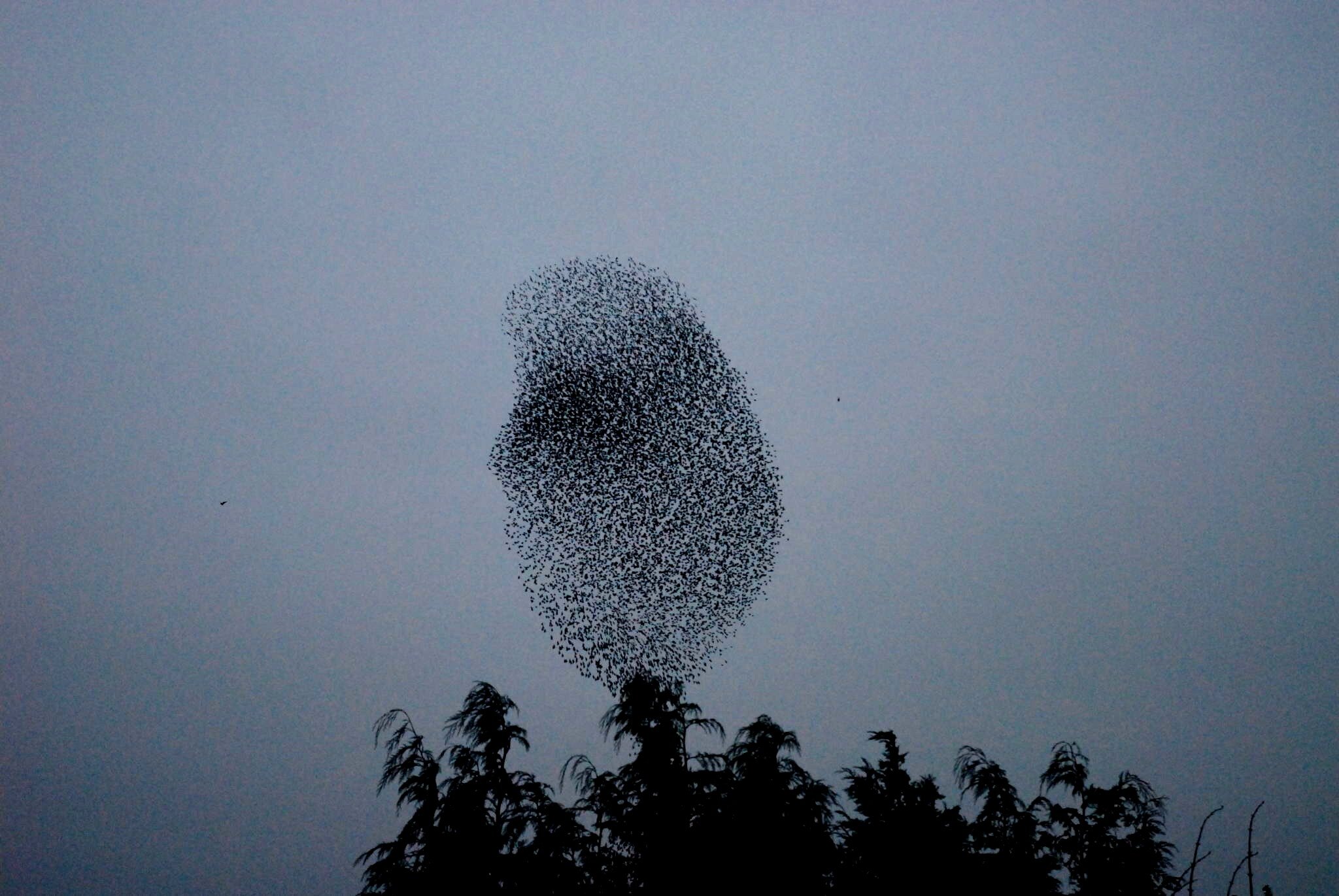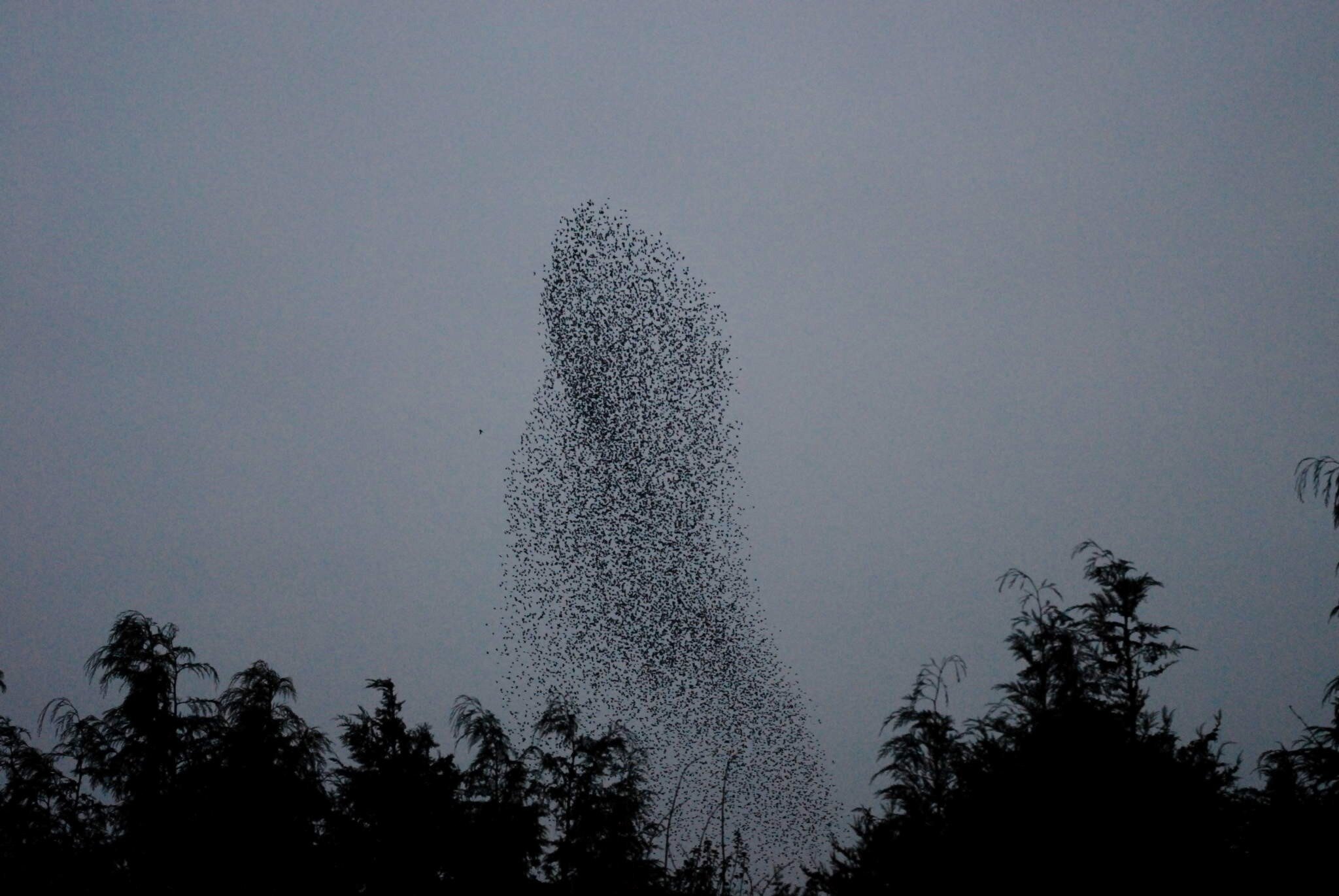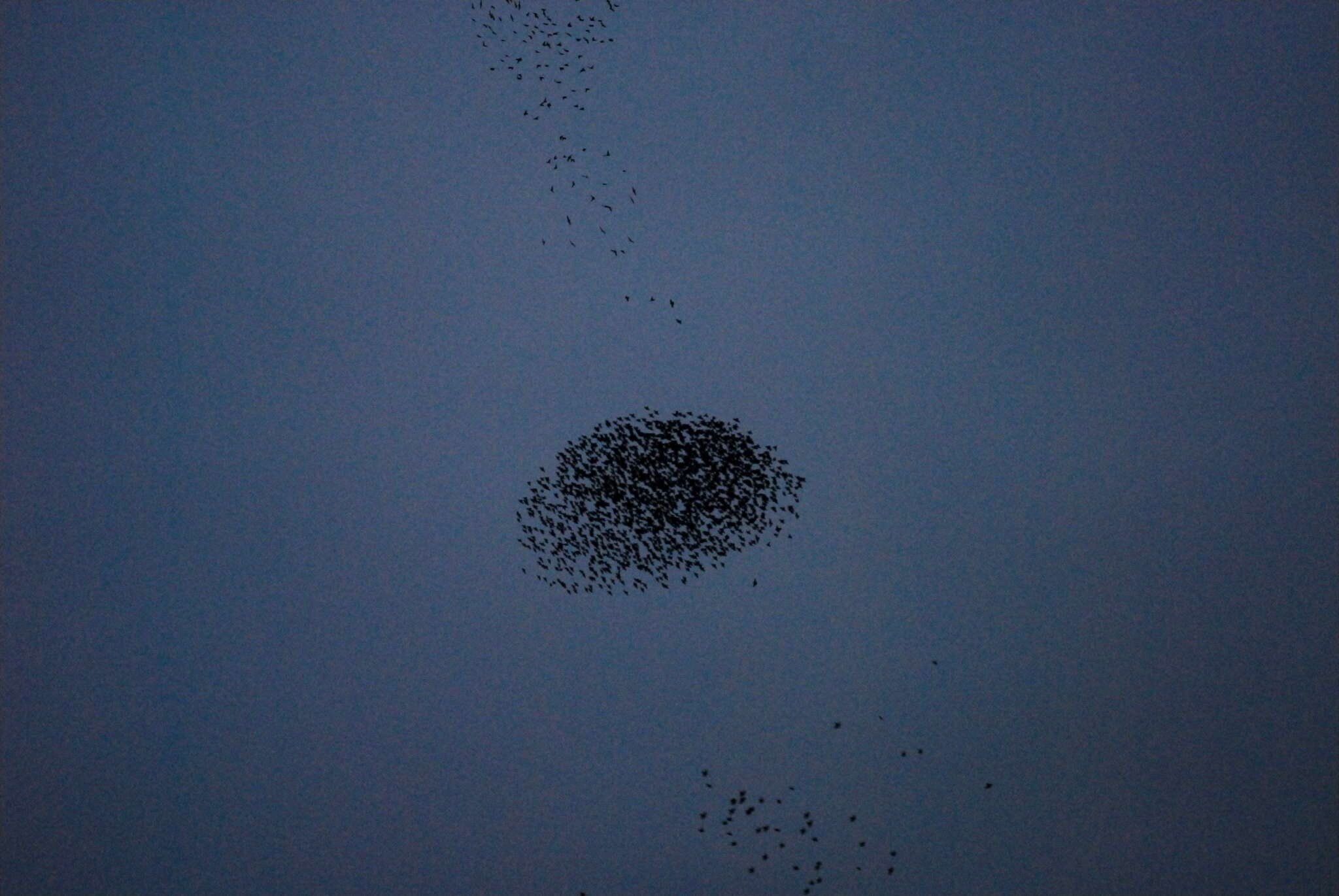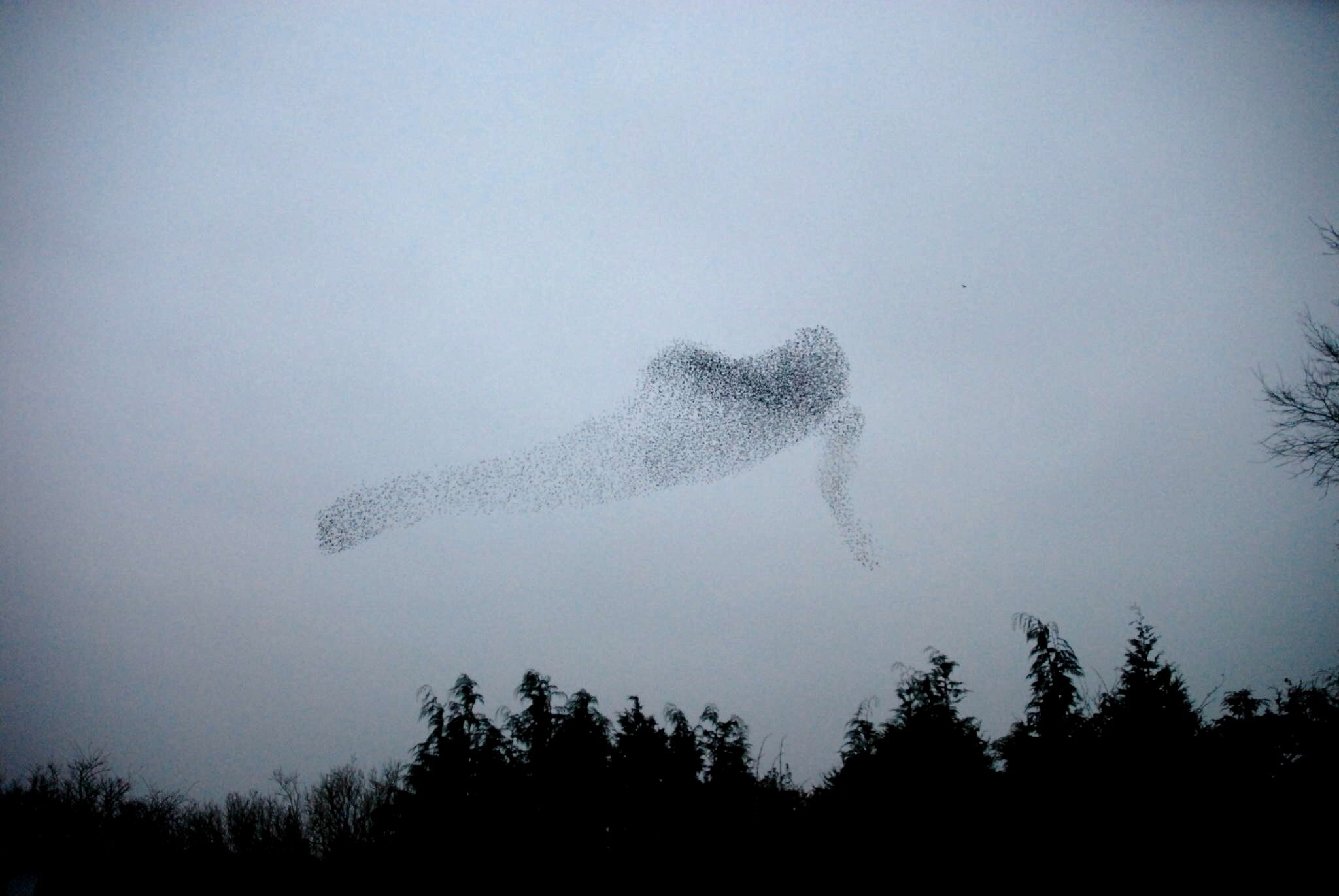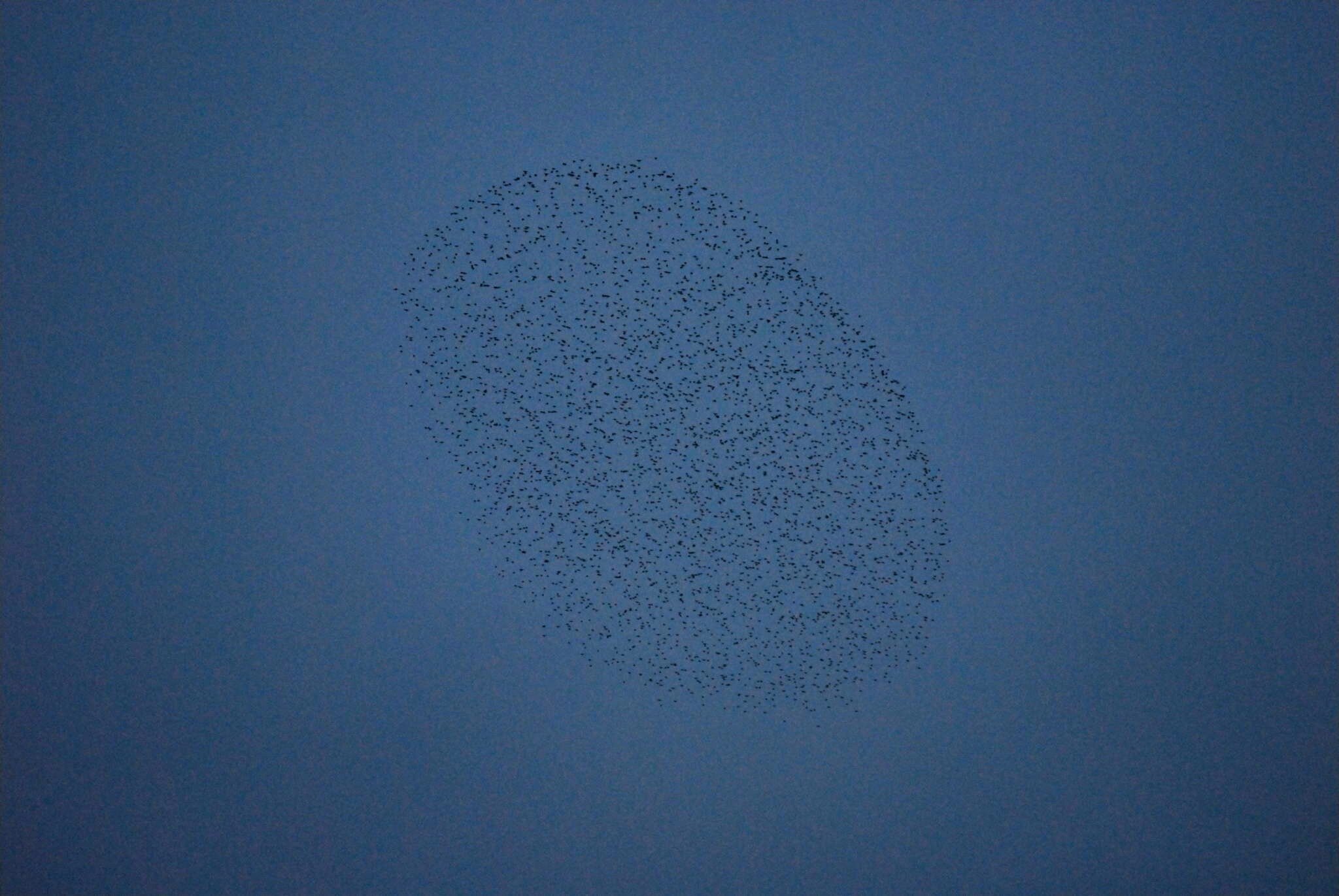Starling Murmurations, Eyrecourt Co. Galway Ireland. Photos by Alan Malone
One of the most beautiful spectacles in nature I think is the weird, viscous patterning of starling murmurations. In 2014 I received an Arts Council Bursary to study the music of Horatiu Radulescu with Bob Gilmore in Amsterdam. The result was my second String Quartet, which was inspired by the notion of murmurations. It included the use of a flocking simulator algorithm in Max/MSP to create swarming textures behind the string quartet.
Here is an excerpt of a sketch I made of the electronics from that time….
Anyway, I was watching a small murmuration yesterday and the thought occurred to me — no doubt brought on by an entire summer reading sci-fi and C.G. Jung —that maybe what I was witnessing was not so much birds in formation, but rather, a shape expressing itself through the medium of starlings. Or, to modify the idea a bit, the undulating of the murmuration suggested a three dimensional cross-section of a higher dimensional form, with starlings as the medium; the undulations of matter serving as three dimensional shadows or impressions caused by higher dimensional movements of other forces. A little like the experience of the square in Edwin A. Abbot’s Flatland for whom a sphere passing through his world appears only as a circle that fluctuates in size along his 2 dimensional plane.
And what applies for the starlings would apply to the morphological variety of all other dynamic forms of matter, be it animal, vegetable or mineral.
This type of trans-dimensional thinking was very much en vogue among both mathematicians and theosophists in the late 19th and early 20th century. If you’re feeling adventurous you can dive into some of the more esoteric stuff here, here or here.
Views of a tesseract (a 4 dimensional hypercube), C. Howard Hinton, The Fourth Dimension
Does nature express itself? Is expression going on with these murmurations? By expression I mean energies directed towards creative acts that are not purely for the function of self-preservation? Could self-preservation be an epiphenomenon of some sort of hedonistic drive in nature? Like inadvertantly prolonging your life because you’ve just always liked going for long walks. Aesthetic hedonism would then be the fundamental reason for life and species survival would have its own telos: to continue to express itself.
This chimes closely with Adolf Portmann’s theory that the morphological variety we see in nature is unnecessarily rich if we assume that biological appearances are solely meant to help with protection and propagation. I’ll be writing a bit more on Portmann soon.
And then there is the question of our own ability, our instinctive drive even, to appreciate these forms. Why have an aesthetic sensibility at all? What is it pointing to?
It is a bit disconcerting that it seems so natural to delineate between aesthetic and non-aesthetic thinking. As if the dichotomy between function-orientated, materialist thought and apparently ‘useless’ aesthetic or metaphysical interests is brought about from the fact that whatever it is that aesthetics is concerned with, it is receding from the sphere of human experience. We see it because it is no longer an intrinsic part of our ontology. Of course we needn’t necessarily take the pessimistic route here. If the aesthetic milieu is indeed separate from us, it might just as well be approaching as receding. We might be on course for some kind of soteriological collision with pure aesthetic being. Who knows?
In any case this brings me back to the idea that, for the moment at least animal subject-hood, and not human, is a lived aesthetics, and animals are engrossed in a mode of being that is a non-linguistic affirmation of whatever it is that makes up their lived experience — animal onto-aesthetics: the illuminated uncanny.
